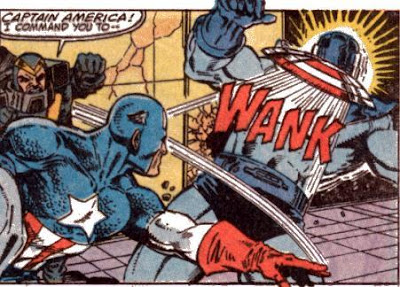Here’s a nice story that should bring heart to researchers struggling with uncracked homophonic ciphers (e.g. Zodiac Killer Ciphers, Beale Papers, etc). Kevin Knight, who Voynich Manuscript researchers may remember from various posts here, has now co-authored a 2011 paper with Beáta Megyesi and Christiane Schaefer from Uppsala University on how they cracked a hitherto unknown (to me, at least) 105-page ciphertext dated 1866 they call the Copiale Cipher.
Slightly unhelpfully, the authors refer only to the manuscript as having come “from the East Berlin Academy”: in fact, as far back as 1992/1993 the East Berlin Academy of Arts and the West Berlin Academy were merged into a single Academy of Arts, Berlin (i.e. the Akademie der Künste). I searched the Akademie’s archives to see if I could find the source but only managed to find one plausible-sounding hit:-
Record group: Döhl – Reinhard-Döhl-Archiv
Classification group: 6.1. Fremde Manuskripte
Lauf. Nummer: 3625
Dat. => Findbuch: o.O., o.D.
Titel: [ohne Verfasser]: die sentenzen verschlüsselter deutbarkeit […]
Perhaps someone with better German and more persistence than me will find the actual manuscript reference.
Anyway, Knight/Megyesi/Schaefer give a nice account of how they went about analysing the neatly-written ciphertext, the various hypotheses they came up with along the way, and how they finally managed to decrypt it (though admittedly they initially only transcribed 16 pages), apart from eight mysterious logograms (i.e. an eight-entry nomenclator “for (doubly secret) people and organizations”). Here’s their translation of the first few lines, which make it quite clear what kind of a book it is:-
First lawbook
of the [1] e [2]
Secret part.
First section
Secret teachings for apprentices.
First title.
Initiation rite.
If the safety of the [3] is guaranteed, and the [3] is
opened by the chief [4], by putting on his hat, the
candidate is fetched from another room by the
younger doorman and by the hand is led in and to the
table of the chief [4], who asks him:
First, if he desires to become [1].
Secondly, if he submits to the rules of the [2] and
without rebelliousness suffer through the time of
apprenticeship.
Thirdly, be silent about the [5] of the [2] and
furthermore be willing to offer himself to volunteer
in the most committed way.
The candidate answers yes.
The interesting thing about the date is that it predates the 1887 founding of the Hermetic Order of the Golden Dawn by 20 years or so: and many (if not most?) regular Cipher Mysteries readers will recall that that was founded with a (quite different) mysterious cipher document allegedly referring to a certain “Fraulein Anna Sprengler” mentioned in the enciphered text. By way of comparison, Aleister Crowley’s favourite Ordo Templi Orientis was founded only in 1895 or thereabouts.
Hence the really big question about this enciphered document is whether there is any connection (perhaps even Anna Sprengler) between it and the Golden Dawn Ciphers. The answer may well lie in the 89 pages as yet untranscribed by K/M/S… hopefully we shall see!
Update: since writing this, I found that K/M/S have put up a detailed web-page including scans, transcriptions, and English translations of the whole 105 pages. Codicologically, they say it is “beautifully bound in green and gold brocade paper, written on high quality paper with two different watermarks [and] can be dated back to 1760-1780.”
They also note that they think it is a document of an “18th century secret society, namely the “oculist order”. A parallel manuscript is located at the Niedersächsisches Landesarchiv, Staatsarchiv Wolfenbüttel.” Which of course rules Fraulein Sprengler out. 🙂
To be honest, the part in the ceremony described where they pluck a hair from the eyebrow of the initiate reminds me not a little of the Simpsons’ Stonecutters episode (“Who holds back the electric car? Who makes Steve Gutenberg a star? We do! We do!”), but perhaps let’s not dwell on that too much… 🙂
